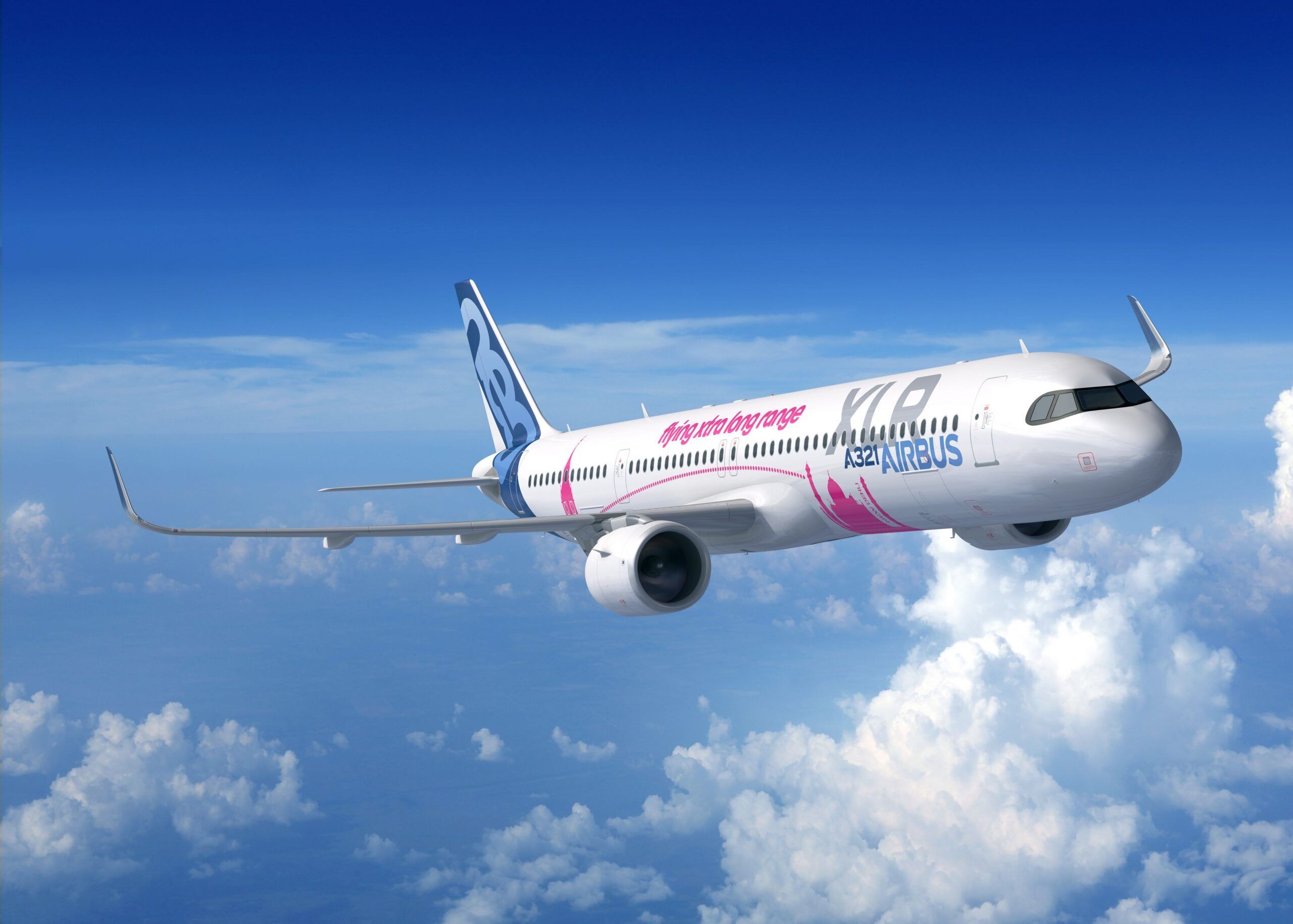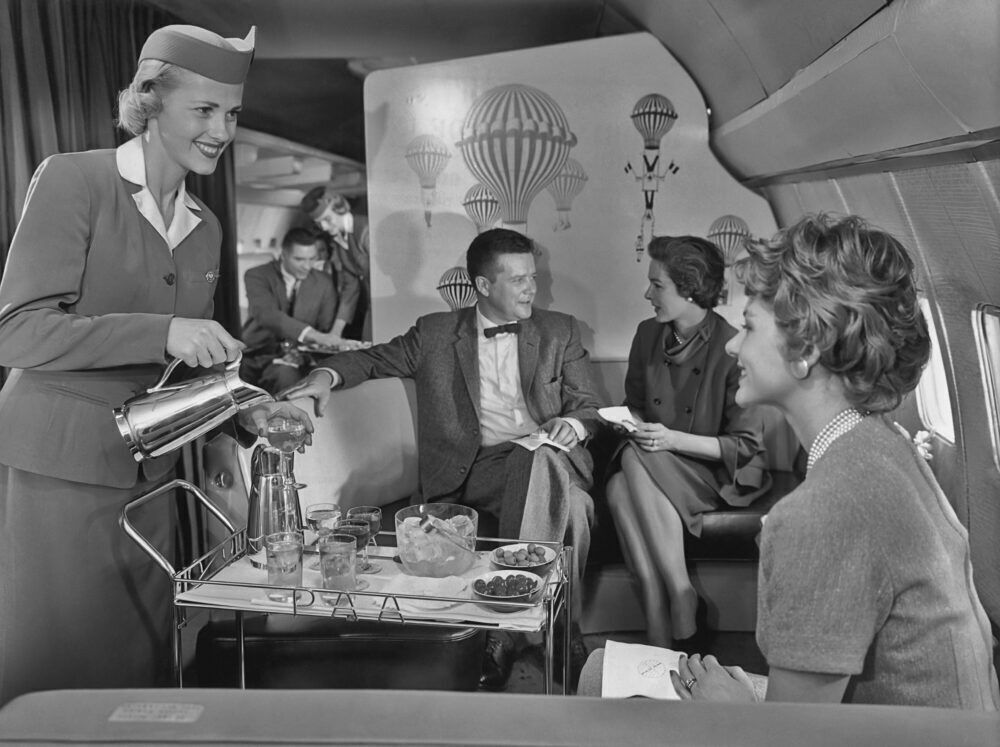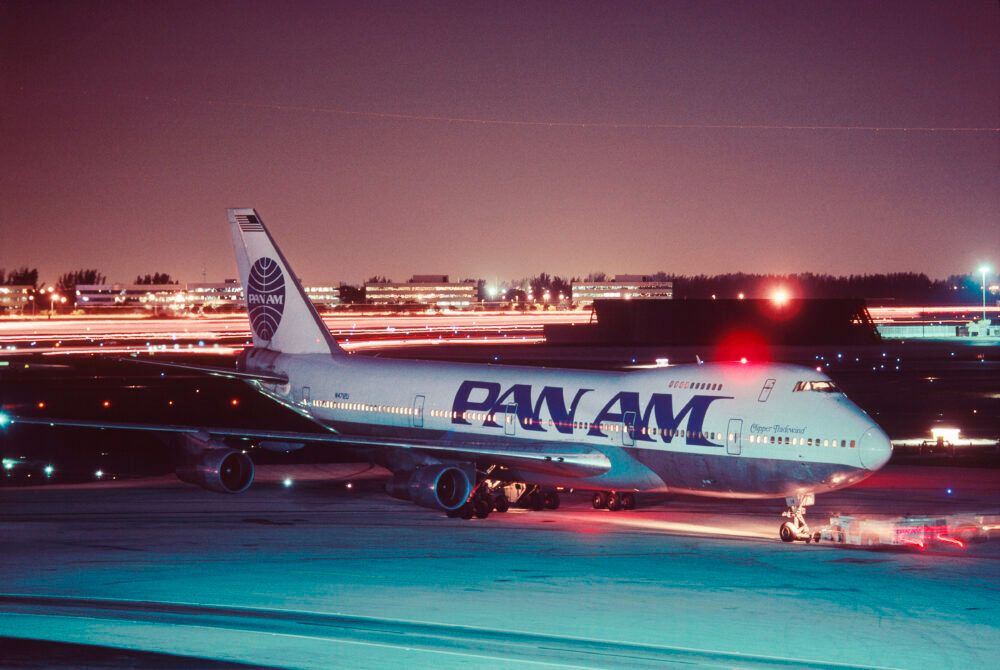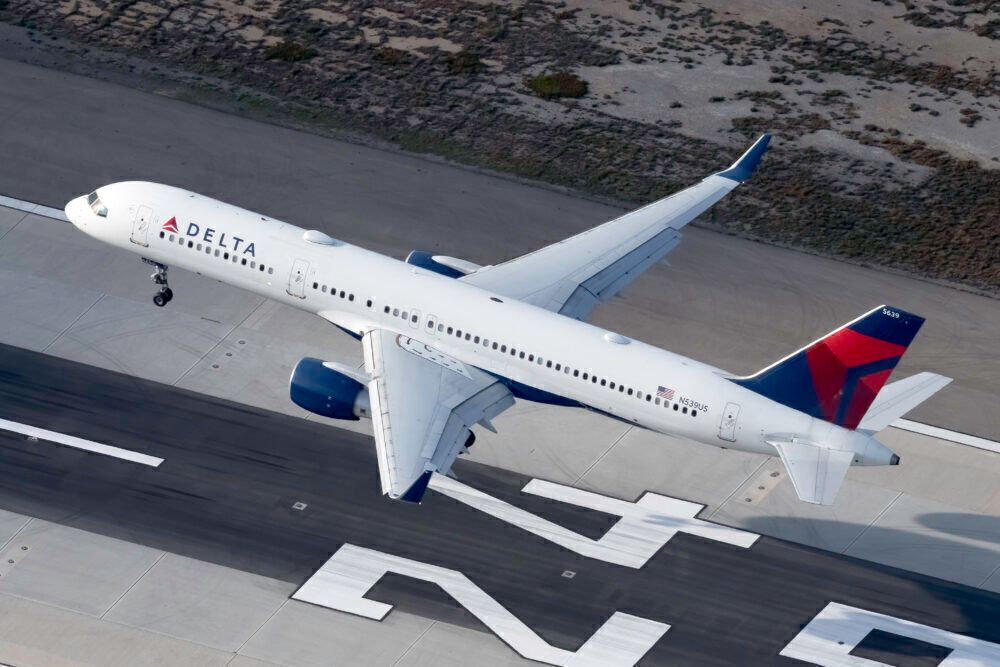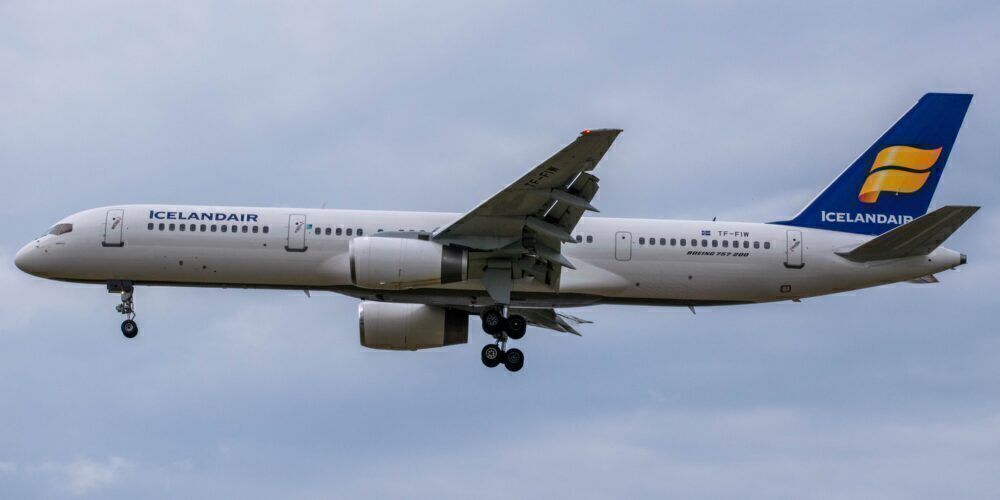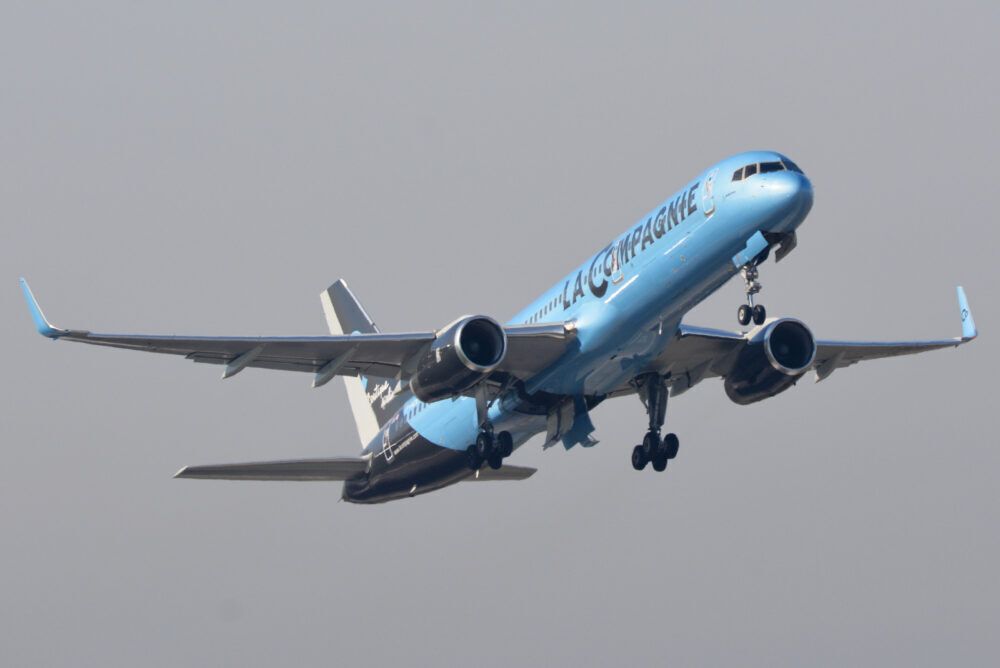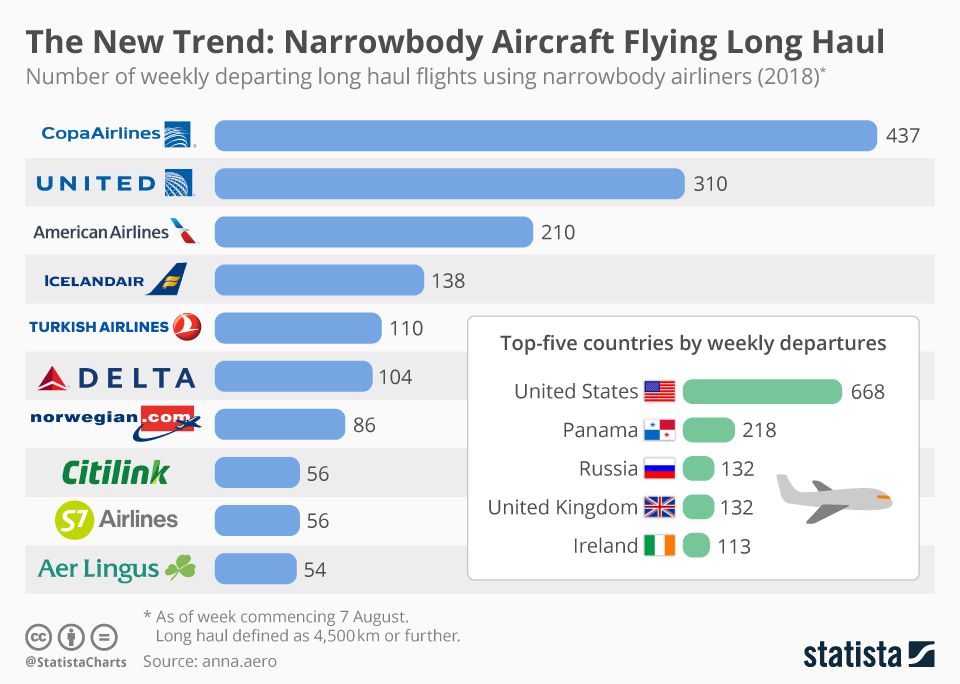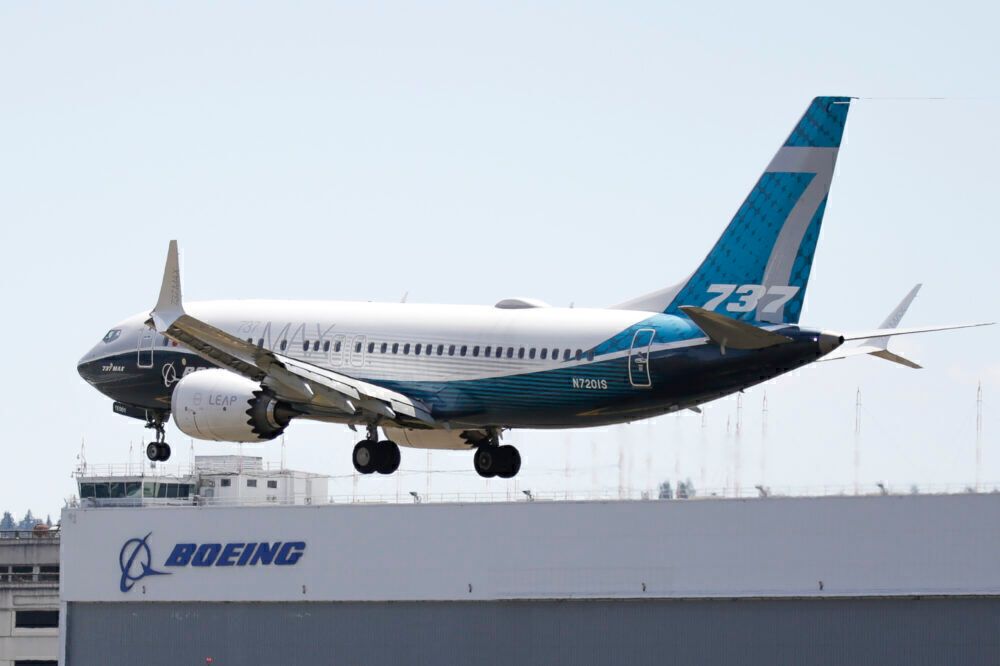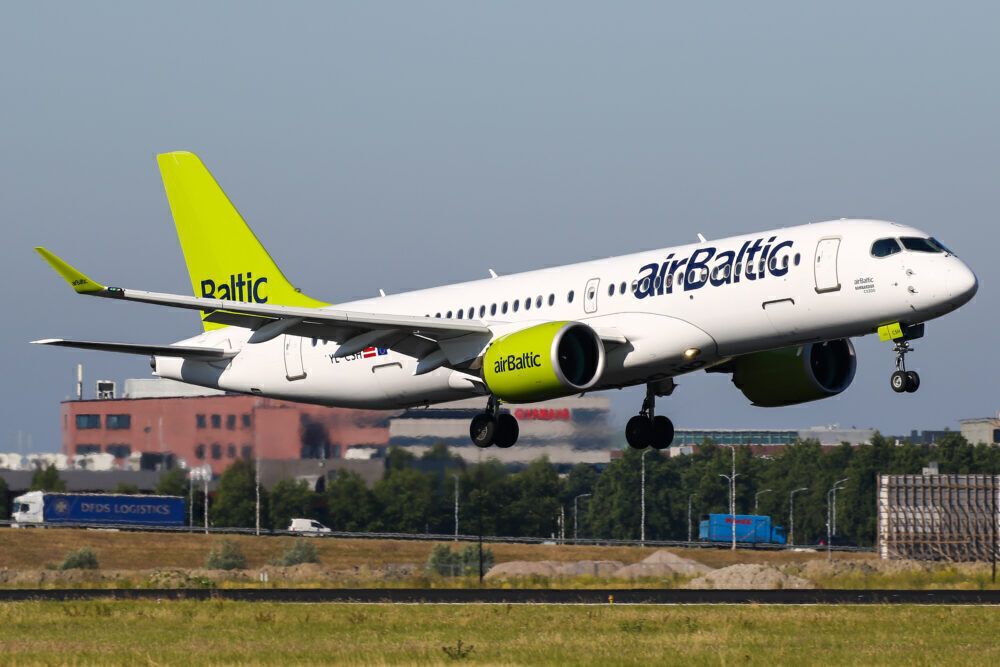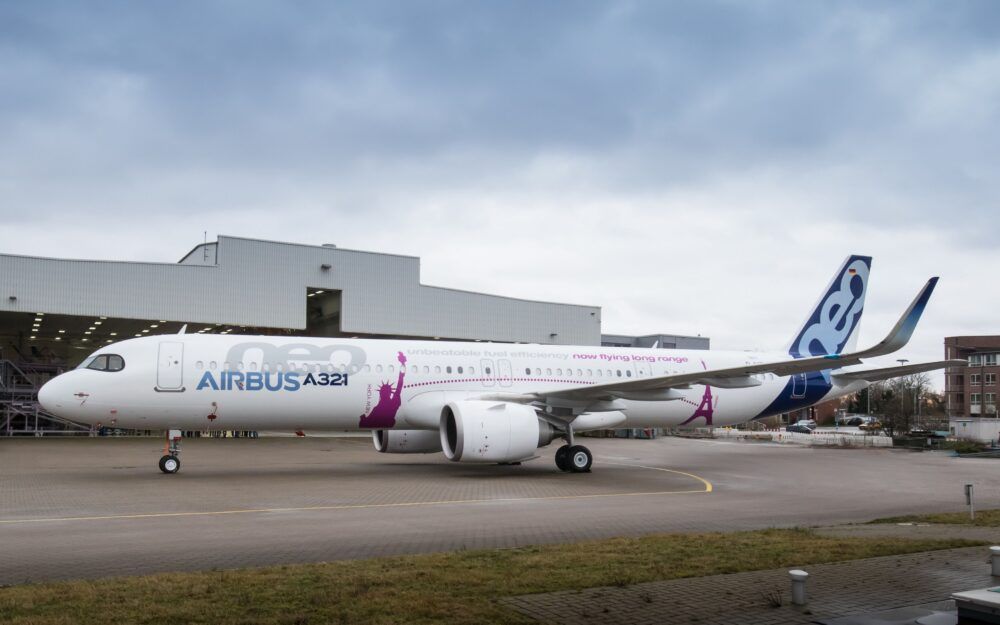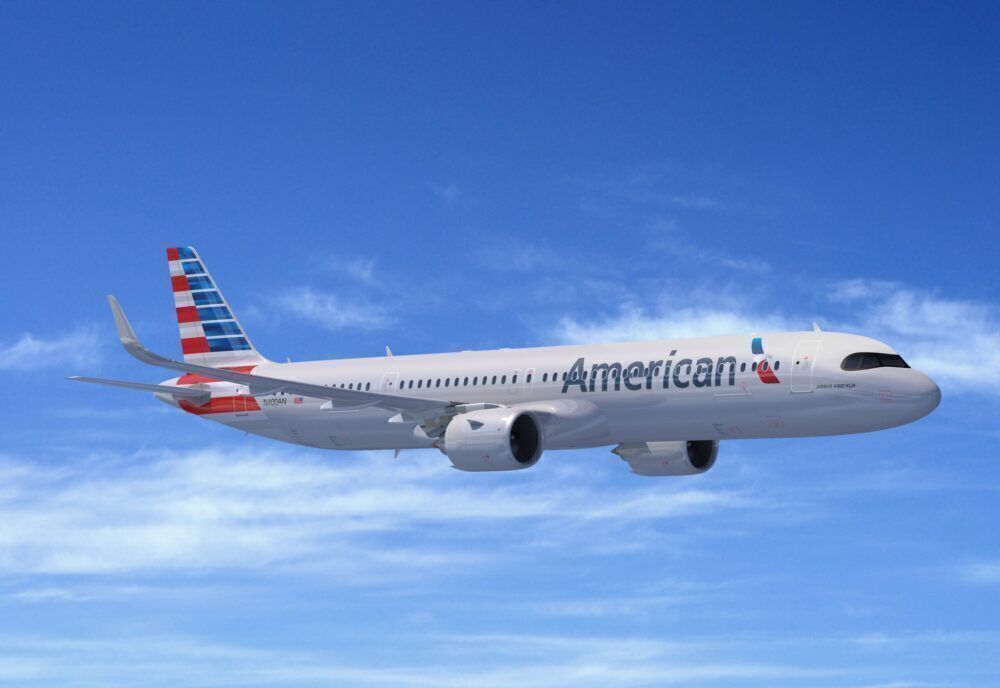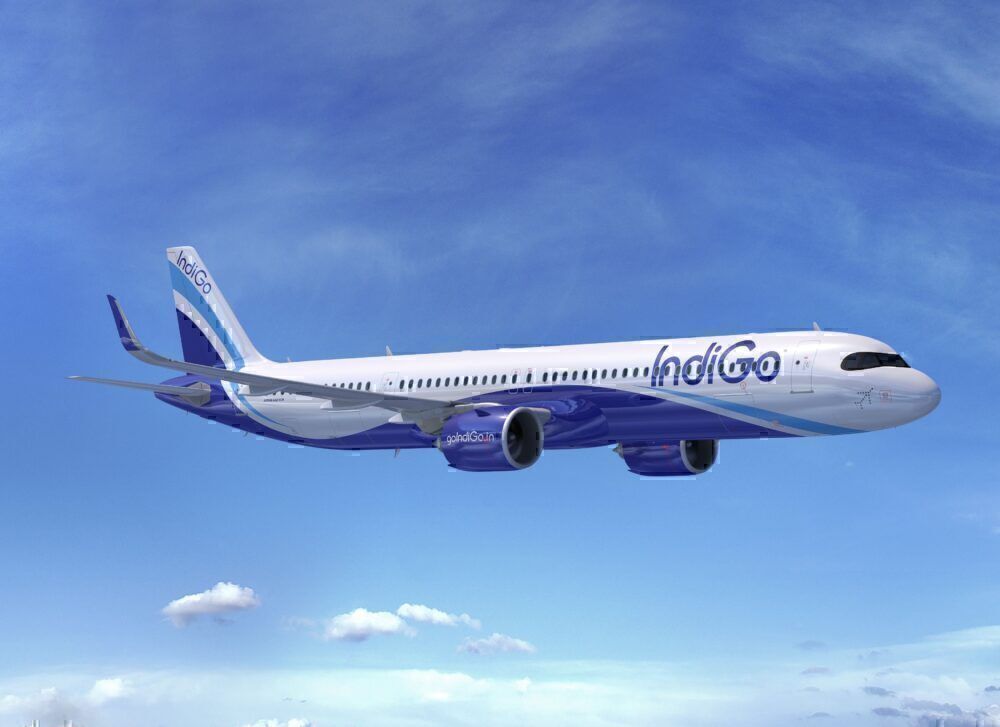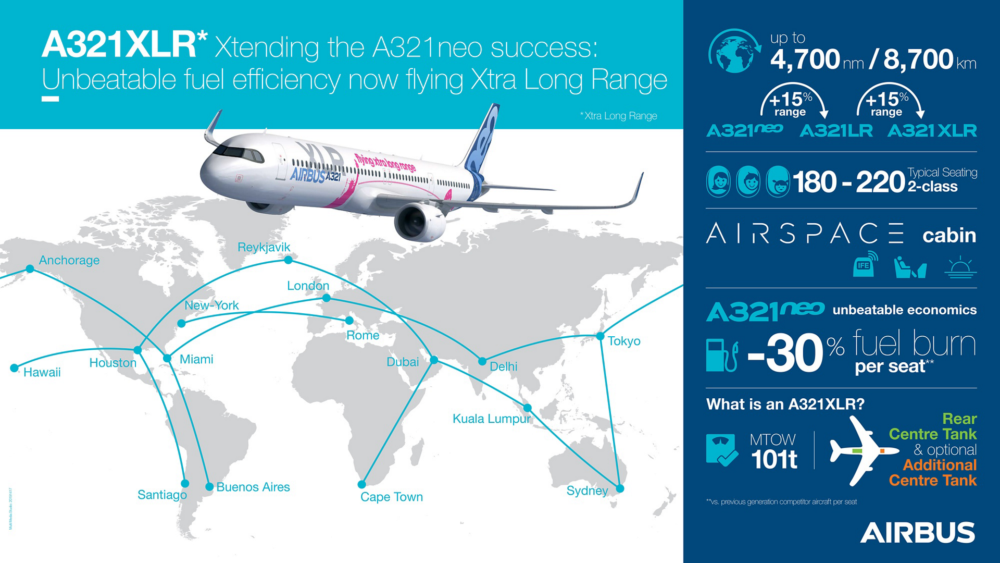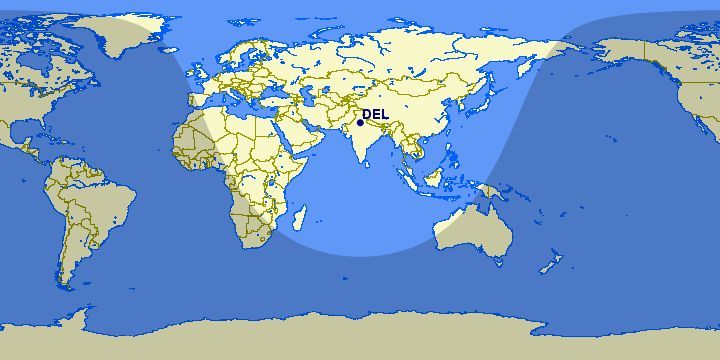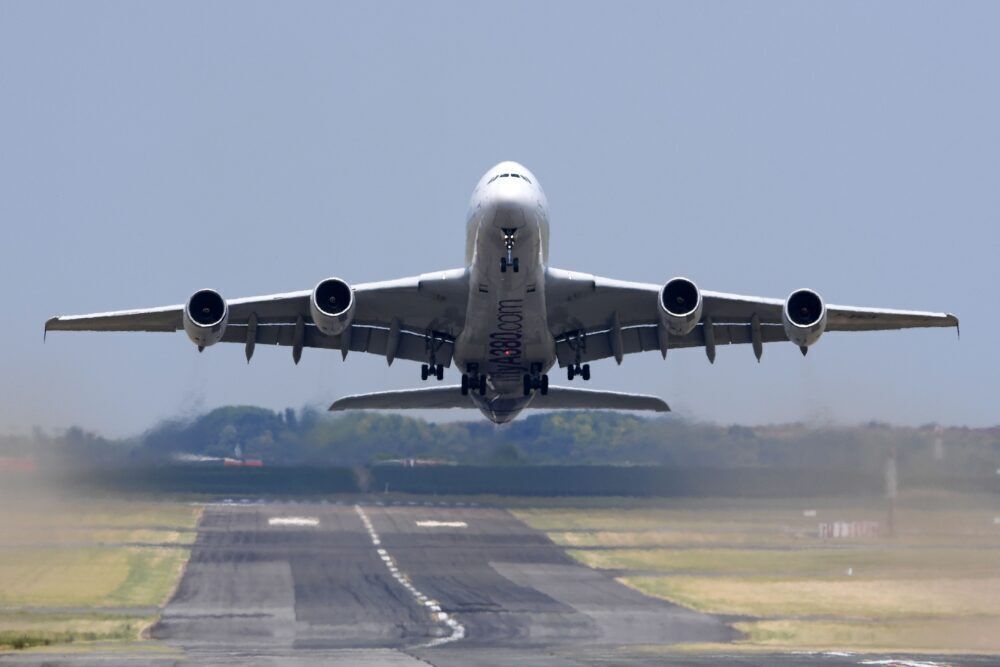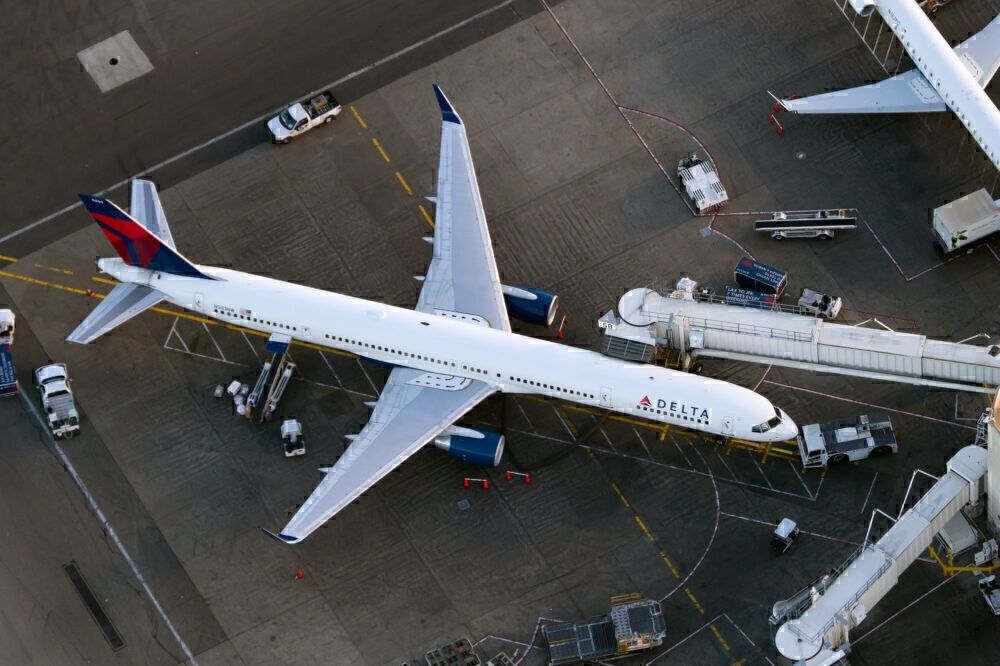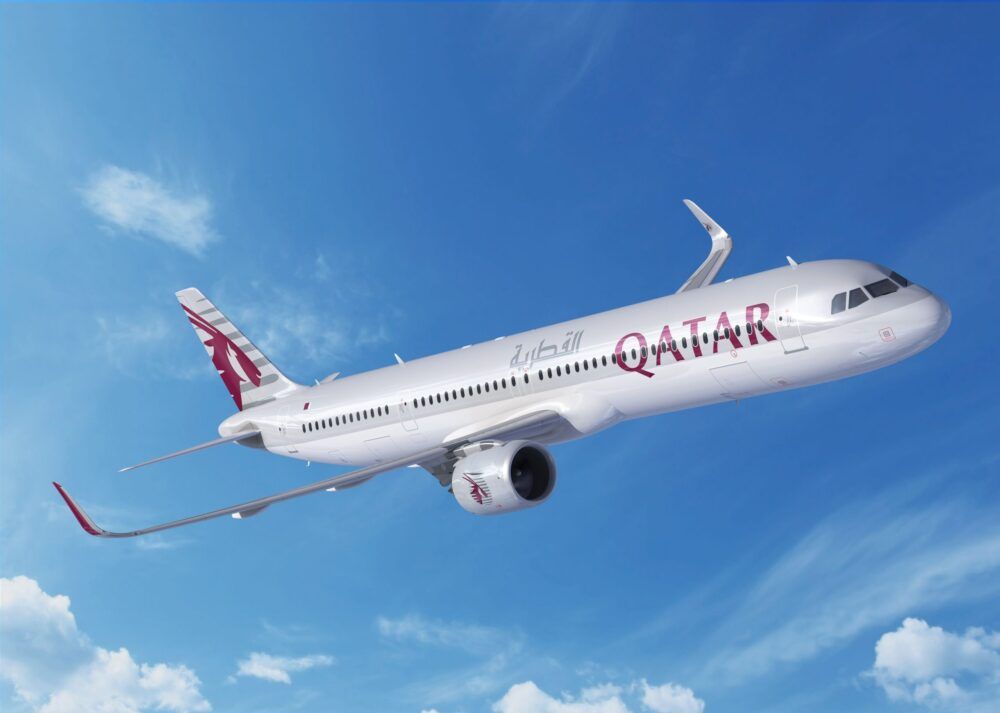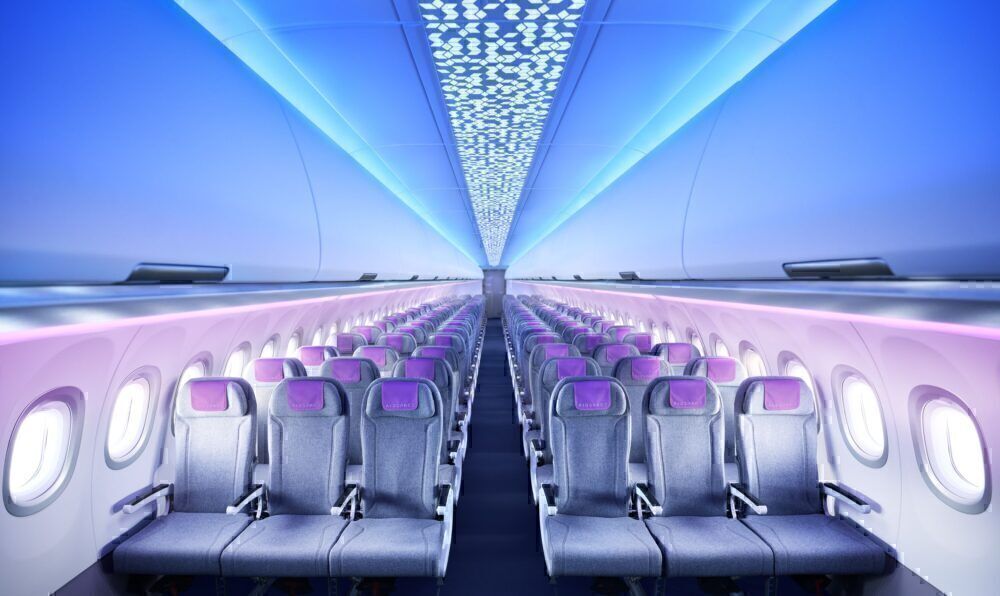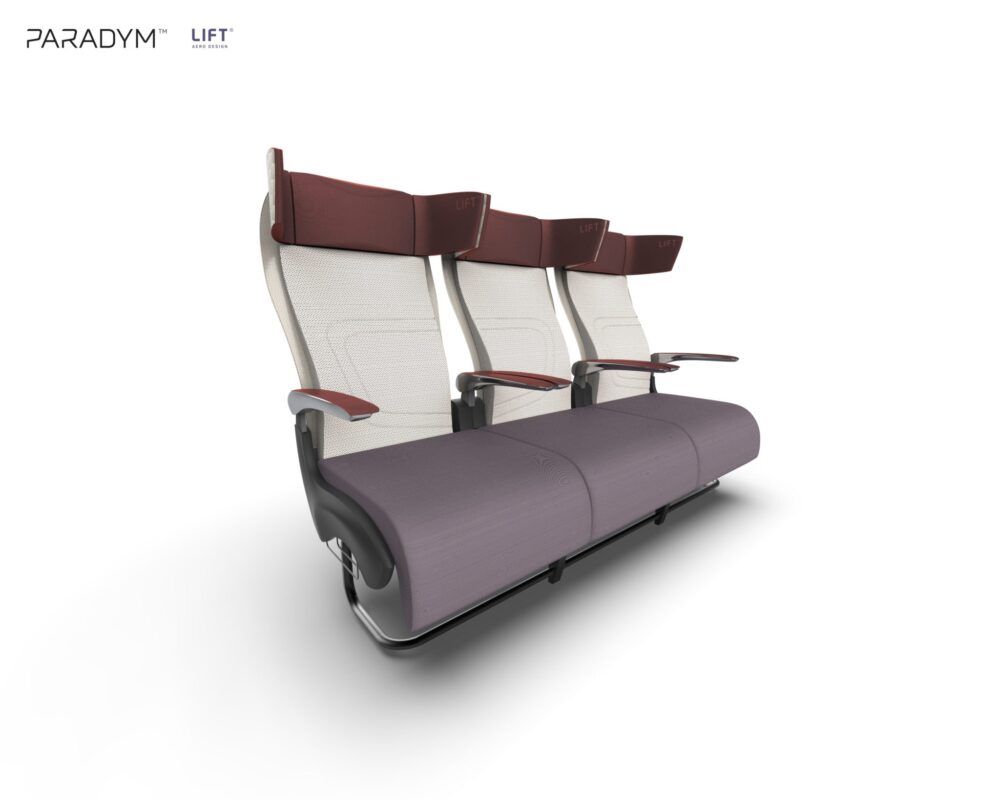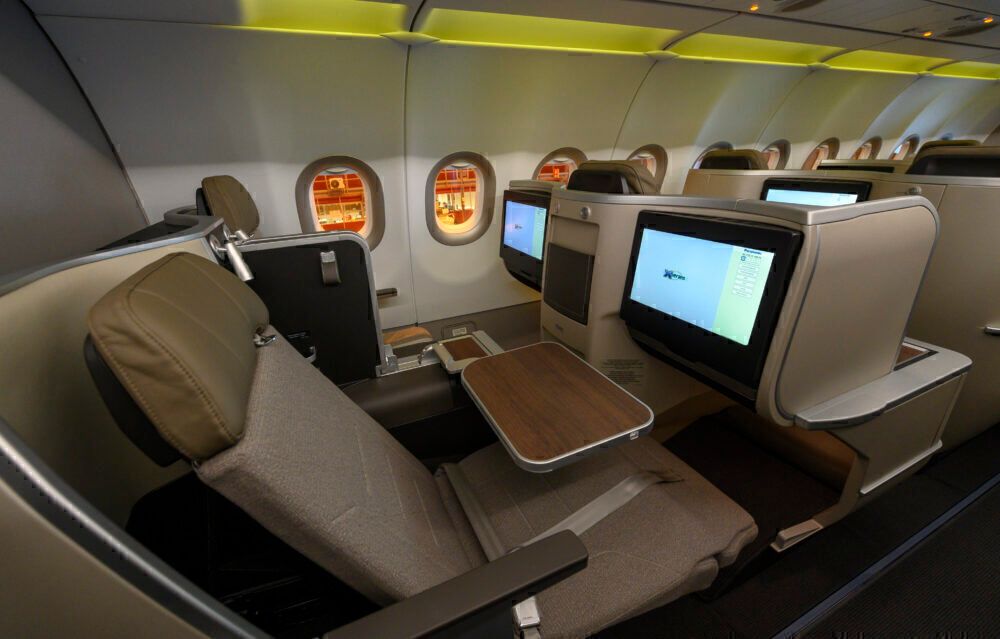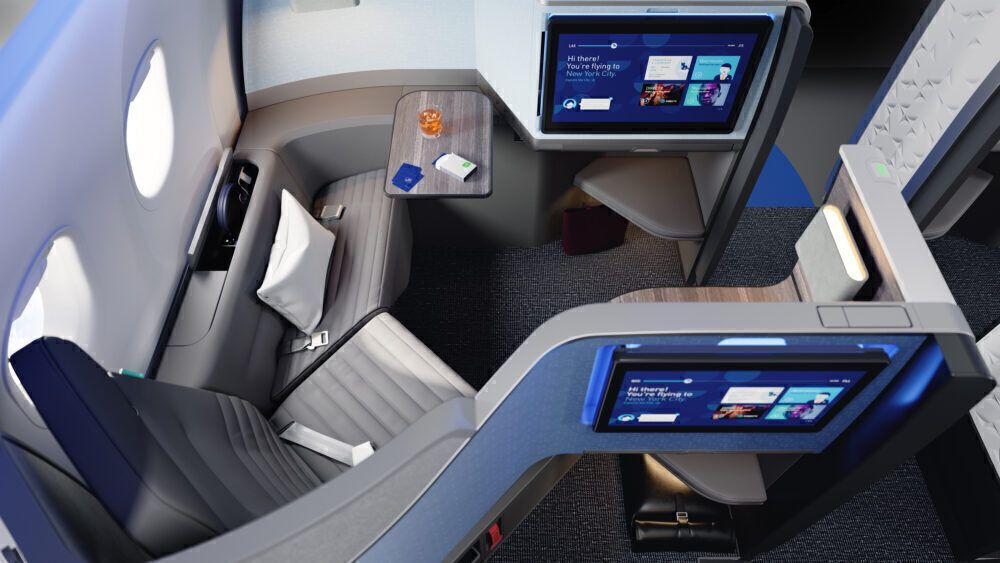Since the introduction of the 757, long-haul flying has not just been the domain of widebody aircraft. This has expanded more in recent years and is set to go further with the new A321XLR. It’s a trend that seems set, offering new routes options and economics for airlines. Whether you want to or not, you are likely to end up flying this way soon.
Early jets and long-haul
Long flights on narrowbody jets are nothing new. The first truly successful jet aircraft, the Boeing 707, was a narrowbody. While it didn’t have the range of today’s long-haul jets, it could easily fly transatlantic routes. In 1967, Iberia and Aerolineas Argentinas operated Madrid to Buenos Aires direct – a route of just over 5,400 nautical miles (10,000 kilometers).
The Boeing 747 changed this, though, and long-haul flying moved to widebodies with its introduction. The 767 that followed it (with lower capacity) is a widebody, as was Airbus’ first aircraft, the A300.
Moving long-haul to narrowbodies with the 757
The Boeing 757, which entered service in 1983, took long-haul back to the narrowbody. This was, and still is, a popular aircraft with airlines. It offers high capacity and excellent range, along with the economic advantages of narrowbody operations. Its high power gives it outstanding performance in challenging conditions and from short runways.
ETOPS regulations at the time opened up new routes to twin-engine aircraft, and the 757 allowed airlines to operate a narrowbody on transatlantic services. All the main legacy US airlines (American Airlines, United Airlines, and Delta Air Lines) have been major operators. Delta remains the largest operator of the type, but American retired its fleet in 2020.
The 757-200 offers a range of 3,915 nautical miles (7,250 kilometers). With this, it can easily handle US coast-to-coast flights and transatlantic routes. Icelandair has even operated it on flights from Reykjavik (KEF) to San Francisco (SFO) – a distance of 3,653 nautical miles (6,765 kilometers).
Amongst other long routes, French airline La Compagnie had one of the longest scheduled routes. It operated two all-business class 757s between 2014 and 2019. Seasonally these operated between Newark and Nice (with regular service also to Paris) - a distance of 3,482 nautical miles (6,448 kilometers). Amongst US operators, United stands out for its Newark to Stockholm routes of 3,415 nautical miles (6,324 kilometers).
Long-haul with the A320 and Boeing 737
It's not just the specialized Boeing 757 that had been capable of long flights. As the A320 and 737 families have improved through the generations, ranges have increased. While we don’t think of them as long-haul aircraft, they are capable of some long-distance sectors.
Data from Statista shows the overall picture in practice in 2018 (pre-pandemic). It looked at aircraft usage globally and showed how many narrowbodies operated long-haul flights (defined as those over 4,500 kilometers). This shows 668 weekly flights in the US, 218 in Panama, and 132 in each of Russia and the UK.
Looking at the 737 MAX, the variant with the longest range is the MAX 7 – up to 3,850 nautical miles (7,130 kilometers). This is capable of flights up to around eight hours. Lufthansa’s 737-700 flight from Frankfurt to Pune, India, is one of the longest - with a flight time of 8 hours and 20 minutes. Aerolineas Argentinas has operated a slightly shorter eight-hour sector between Buenos Aires and Punta Cana.
For the A320 family, the A321neo improved range up to 3,500 nautical miles (6,482 kilometers). Airbus has gone further, though, with the A321LR. With additional fuel tanks, this increases the range to 4,000 nautical miles (7,408 kilometers), allowing transatlantic services. We will discuss this and the impact of the upcoming A321XLR shortly.
The A220-300 is a solid performer as well. It offers a range of up to 3,400 nautical miles (6,297 kilometers) – less than the 737 MAX or A320neo. With lower capacity and very efficient operation, it opens up several interesting new options for airlines.
Amongst current operators, airBaltic has some of the longest routes. It has operated the A220 between Riga and Abu Dhabi (2,359 nautical miles or 4,369 kilometers).
The A220 does not operate any transatlantic routes yet, but it could in the future. In 2019, it received an ETOPS 180 rating, making longer transatlantic flights a real possibility. London City-focussed Odyssey Airlines is eyeing these sorts of trips, with 10 A220s on order. There has also been discussion of a longer-range version, with an increased maximum take-off weight.
Going further with the A321LR
Airbus introduced the A321LR in 2018. This is based on the A321neo, with additional fuel capacity. It takes range up to 4,000 nautical miles (7,408 kilometers) - just exceeding that of the Boeing 757-200.
Six airlines operate the A321LR between Europe and North America in 2021. The longest, between Stockholm and Chicago, will have a block time of over nine hours - this is planned for launch in August 2021.
Its usage has increased quickly. In 2019 (its first full year of operation), there were less than 4,000 transatlantic A321LR flights. In 2021, this has increased to over 10,000. The most frequented route is between Lisbon and Newark, with TAP Air Portugal.
Other than transatlantic, the A321LR operates long routes for Air Astana from Almaty to London and Paris. And Air Busan plans to operate it to Delhi and several Indonesian cities post-pandemic (according to ch-aviation.com).
True long-haul with the A321XLR
Narrowbody range will go even further when the A321XLR enters service - up to 4,700 nautical miles (8,700 kilometers). So far, there are over 450 orders for the A321XLR – from 22 airlines and two leasing companies. It remains on track to enter service in 2023.
It is proving popular in the US, with American Airlines and United Airlines both ordering 50 aircraft. Frontier Airlines has 18 on order, and JetBlue has 13.
Indian low-cost airline IndiGo also has a huge order for 300 A320neo – this will include many A321XLRs, but it is not yet confirmed how many. There are also large orders from Qantas, AirAsia, VietJet, Wizz Air, and Air Arabia.
The A321XLR will offer a significant step up in long-haul routes from what we have seen previously. Longer transatlantic routes will, of course, be popular. But it also can connect South Asia with Europe, the Middle East with South Africa, or the southern US with North America with Argentina and Chile.
It is still early to know what the main operators plan to do with their aircraft. American Airlines has indicated it will use them to Europe and closer South American destinations. It is likely to base the aircraft at its hubs in Philadelphia, Boston, Charlotte, and Chicago.
United has discussed expansion from its hubs in Newark and Washington D.C. JetBlue will likely build on its first routes to London and expand service to Europe.
Crucially, it will also open up many more long-haul routes to low-cost airlines, with just narrowbody fleets. We could see a lot from IndiGo in this area, for example. From Delhi, it could fly anywhere in Europe and Asia, most of Africa, and even the west coast of Australia.
Going further in the future?
From 2023 the A321XLR will start offering new long-haul possibilities. With at least 450 orders so far, we are going to see plenty of changes. It seems likely, though, that more will follow.
Airlines have been shifting more to a point-to-point preference for several years. This has been a major driver of the problems seen with larger widebodies – especially the A380. Post-pandemic, it seems likely this trend will continue.
Narrowbody aircraft are more suited to new lower capacity point-to-point routes. And lower demand on other routes in the coming years will favor narrowbody deployment too.
With this in mind, it is likely that Boeing will soon offer something new in the market. If it doesn’t, it will lose out to Airbus. It has been looking since at least 2015 at a new mid-sized aircraft (dubbed the NMA, or 797). This was expected to take over from the 757, but likely as a widebody design.
Boeing dropped the plans in 2020, though. This came about amidst the grounding of the 737 MAX, with attention (and budget) drawn elsewhere. The launch of the A321XLR also played a part, with Boeing re-thinking its plans of what to offer.
It remains to be seen what the US planemaker will do. A clean-sheet aircraft could take advantage of new technology, composites, and engines. But this would be a time-consuming and expensive route to go down. It's more likely that Boeing will update an existing aircraft. The 757 is a possibility for this, re-engined and likely with increased range. It may, of course, opt for a widebody update instead.
What about the passengers?
While long-haul narrowbody flight will be good for airlines, passengers will suffer in some ways. Fares may be lower if airlines can take advantage of lower operating costs. And there may be more point-to-point routes coming up. But it's hard for passengers (and crew) to get excited about the experience.
Some airlines will stay away from this. SriLankan Airlines' CEO has commented that the airline will not take on narrowbodies for long-haul. And neither will Qatar Airways. Speaking to Simple Flying about the new A321XLR, CEO Akbar Al Baker ruled it out for his airline, saying:
“I don’t want to put my passengers in a narrowbody aeroplane traveling nine and ten hours.”
Narrowbdies simply offer less room. Cabins can be more cramped, and there is less space away from the seat for passengers to stand – or move. Airbus is, of course, aware of this and has made changes.
Its Airspace Cabin design features larger entrance areas, larger windows, and leaner sidewalls to improve seat space. This has debuted on JetBlue's first A321LR, which will surely delight passengers when it launches to London later this summer.
We may see some airlines opt for a slightly less dense configuration, but we will not see major changes immediately. Looking further ahead, designs are emerging for new economy seating. One example is LIFT Aero Design and its PARADYM concept seating. This would introduce a new design seat that can easily convert between three classes. It could be very attractive for narrowbodies, with configuration able to be changed right up to the point of boarding.
Business class will be better
Upfront, the situation will be different. We will not see the facilities that have found their way into the 747 and the A380 – no bars, lounges, or onboard showers. But it is easier for airlines to offer a narrowbody business class product that makes longer flights tolerable.
JetBlue launched a new Mint business class product for the A321LR, and it will likely do something better for the A321XLR. Other US international operators will probably launch something comparable to compete. American Airlines has hinted that it will offer a lie-flat business cabin with aisle access but has not confirmed anything yet.
As more aircraft take on longer routes, we will see more innovation in seating. In October 2020, STELIA Aerospace unveiled a new business class product specifically designed for narrowbody aircraft. These are 1-1 configured flatbeds seats, with optional door – a very similar offering to that on many widebodies.
There seems no doubt long-haul narrowbody flights will increase in amount and duration over the coming years. Are you excited by the prospect this brings for lower costs and more point-to-point routes – or put off by the idea of even longer flights in a narrowbody cabin? Feel free to share your thoughts in the comments.

